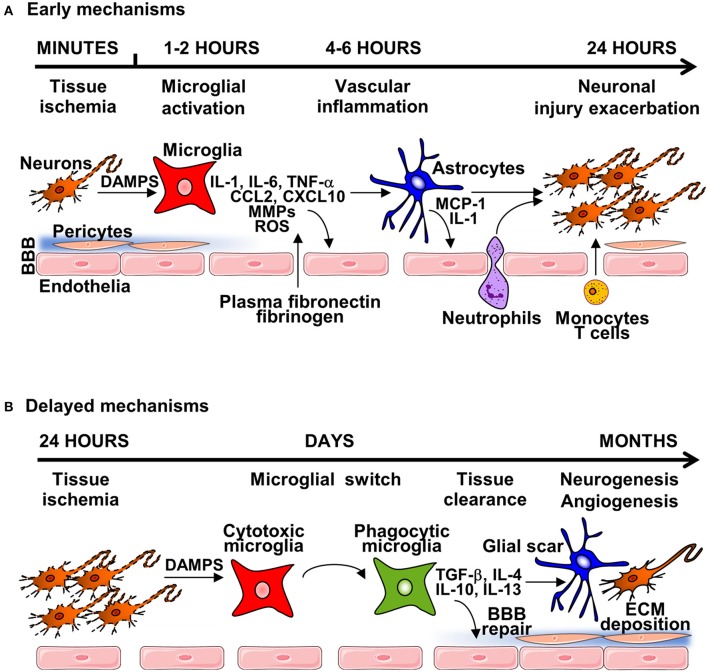Figure 1.
The general mechanisms of neuroinflammation post-stroke. (A) Early mechanisms of neuroinflammation are initiated by acute neuronal injury producing DAMPS, leading to microglial and endothelial cell activation and disruption of the BBB, through release of pro-inflammatory cytokines, chemokines, reactive oxygen species (ROS) and matrix-metalloproteinases (MMPs). Degradation of the extracellular matrix (ECM)—in both the parenchyma and basement membrane induces astrocyte endfeet and pericytes lifting from the endothelium. Damage of the BBB enables infiltration of circulatory cells with transmigration of neutrophils and immune cells. This damage can lead to brain oedema and hemorrhage, causing further neuroinflammation and tissue damage. (B) During the subacute phase of injury, microglial switch from cytotoxic to phagocytic phenotype occurs, leading to tissue clearance, and expression of anti-inflammatory mediators and neurotrophic factors that leads to the formation of the glial scar, and initiation of brain repair mechanisms, including neurogenesis, angiogenesis and BBB repair.

